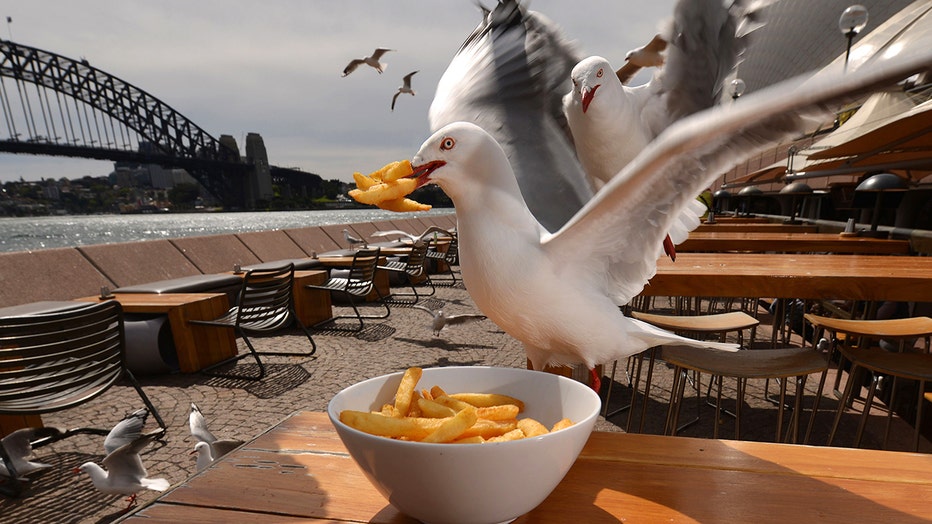Staring at seagulls may prevent them from stealing your food, scientists suggest
CORNWALL, England - Seagulls are rather notorious for food-snatching in urban areas — like the hungry gull who went viral after nabbing a $21 lobster roll out of the hand of an unsuspecting woman who caught it all on camera — but scientists now believe that staring might be the best way to keep feisty gulls at bay.
RELATED: Seagull photobombs, steals woman's lobster roll
Researchers focused on herring gulls in coastal towns in Cornwall, U.K., an area where gulls are accustomed to human interactions and have eaten humans’ food before.
Of the 74 gulls examined by researchers, only 27 of them, or 36 percent, actually attempted to go for the food. Those that were being stared at took a much longer time to attempt snatching food then those who weren’t — 21 seconds longer, on average.
The research, which was conducted by a team from the Univeristy of Exeter and published in the Royal Society Publishing’s Biology Letters journal, centered on the 19 gulls that completed both a trial in which the experimenter stared and one in which the experimenter looked away.
They tested the gulls by placing a bag of french fries in front of an experimenter in a sealed, transparent freezer bag. The experimenter would crouch down with her body facing the gull, and she would initially look away until she saw the gull start to approach the food out of her peripheral vision.

When the gull took its first step toward the food, the experimenter would start a stopwatch and turn her gaze one of two ways.
In the “Looking At” version, the experimenter would look straight at the gull and follow it with her gaze if it moved toward the bag to collect the food. In the “Looking Away” version, the experimenter looked to either the left or right of the gull at about a 60 degree angle and held this position until the gull made it all the way to the bag of fries.
In each instance, the experimenter recorded how much time it took for the gull to reach the bag of fries. If the gull never actually made it to the bag after beginning its approach but remained in the area, the experimenter would record a time of 300 seconds.
They found that the direction of the person’s gaze had a significant effect on the gulls’ latency to approach food.
“This demonstrates that gulls use behavioral cues from humans when making foraging decisions in urban environments, and that they find human gaze aversive,” wrote Madeleine Goumas, the lead author on the paper.
The next time you bring anything delicious into the territory of seagulls, be prepared to stare down your foes.

